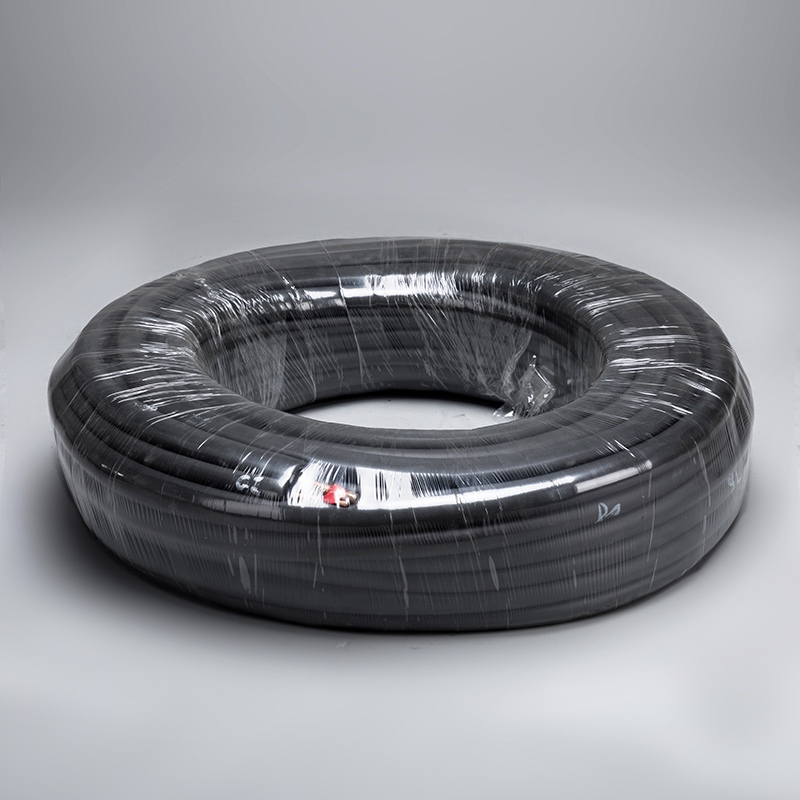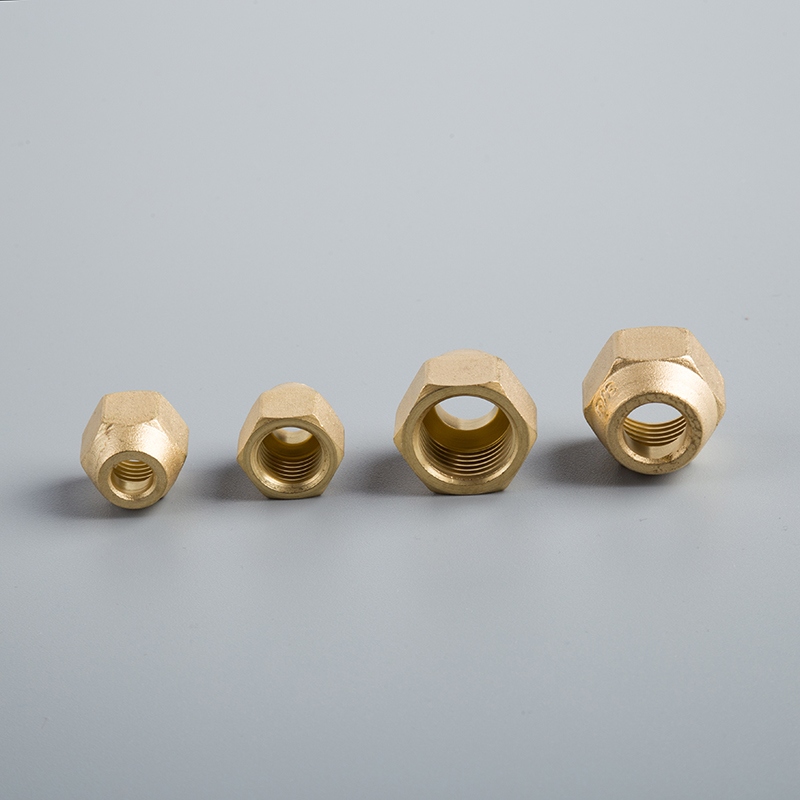How to Install Air Conditioning Connecting Pipes

Proper installation of air conditioning refrigeration accessories and air conditioning connecting pipe is crucial for optimal performance and energy efficiency. Ensuring a seamless connection between the indoor and outdoor units is essential for maintaining thermal comfort and indoor air quality. Expert HVAC technicians emphasize the significance of correct installation in maximizing comfort while minimizing energy consumption. By following precise guidelines and utilizing the right tools, you can achieve an efficient system that provides consistent cooling or heating throughout your space.
Preparation
Gathering Tools and Materials
Essential Tools:
Screwdrivers/Nut Drivers: Essential for securing connections and fastening components.
Hacksaws: Used for cutting pipes to the required length with precision.
Hand Seamers/Snips: Ideal for shaping and adjusting materials during installation.
Wrenches: Necessary for tightening fittings and ensuring a secure connection.
Vises: Assist in holding pipes steady while working on them effectively.
Power Drills: Facilitate drilling holes for routing pipes and cables efficiently.
Taps: Ensure proper threading of pipes for a leak-free connection.
Files: Help in smoothing rough edges after cutting pipes accurately.
Multimeter: Essential for checking electrical connections and ensuring safety.
Necessary Materials:
Foam Insulation: Provides thermal protection to prevent energy loss through the pipes.
Rubber Insulation: Offers flexibility and durability, ideal for varying pipe sizes.
Fiberglass Insulation: Ensures heat retention within the pipes for efficient operation.
Duct Tape: Used for sealing joints and securing insulation in place effectively.
Zip Ties: Assist in organizing cables and securing them neatly along the pipe route.
Tape Measures: Essential for accurate measurements to ensure precise pipe lengths.
Knives: Aid in cutting insulation materials to fit perfectly around the pipes.
Remember, having all the necessary tools and materials ready before starting the installation process is key to a successful outcome. Each tool plays a crucial role in ensuring a seamless installation, while the right materials guarantee optimal performance of your air conditioning system.
Safety Measures
Personal Protective Equipment:
Wear safety goggles to protect your eyes from debris or splashes during cutting or drilling processes.
Utilize heavy-duty gloves to safeguard your hands from sharp edges or hot surfaces while handling materials.
Safety Protocols to Follow:
Always turn off the power supply before beginning any work on electrical components to prevent accidents or shocks.
Use a sturdy ladder or platform when working at heights to avoid falls or injuries during installation procedures.
Prioritizing safety measures throughout the installation process is essential to protect yourself from potential hazards and ensure a smooth workflow towards completing your air conditioning connecting pipe setup successfully.
Step-by-Step Installation Process

Planning the Layout
To begin the installation process, measure the distance between the indoor and outdoor units accurately. This step ensures that the connecting pipes are of optimal length for efficient operation. Next, mark the pipe route meticulously to guide you during the installation, preventing any errors in connecting the air conditioning refrigeration accessories and air conditioning connecting pipe.
Cutting and Preparing Pipes
After planning the layout, it's time to cut the pipes to the required length using a hacksaw. Precision is key in this step to ensure a perfect fit for seamless connectivity. Once cut, focus on deburring and cleaning the pipes thoroughly. Removing any rough edges or debris from the pipes is essential for a smooth installation process.
Connecting the Pipes
Now comes the critical phase of fitting the pipes together securely. Proper alignment and connection are vital for optimal performance of your air conditioning system. Ensure a snug fit to prevent any leaks or inefficiencies. Following this, secure all connections firmly to guarantee a stable and durable setup.
Insulating the Pipes
Types of insulation materials
Foam Insulation: Provides thermal protection to prevent energy loss through the pipes.
Rubber Insulation: Offers flexibility and durability, ideal for varying pipe sizes.
Fiberglass Insulation: Ensures heat retention within the pipes for efficient operation.
Applying insulation to the pipes
Begin by measuring the length of the pipes accurately to determine the required amount of insulation material.
Cut the insulation materials using sharp knives to fit precisely around the pipes without leaving any gaps.
Wrap the insulation snugly around the pipes, ensuring a secure fit to prevent heat loss or condensation buildup.
Use duct tape to seal any joints or edges where multiple pieces of insulation meet for a continuous barrier.
Finally, secure the insulation in place with zip ties at regular intervals along the pipe route to maintain uniform coverage and protection.
Additional Considerations
Cost Implications
To understand the Breakdown of potential costs, consider the expenses involved in acquiring materials and tools for the installation. The cost varies based on the complexity of the project, with factors such as pipe length and insulation materials influencing the overall expenditure. By planning ahead and sourcing cost-effective alternatives, you can effectively manage your budget without compromising on quality.
When aiming to Tips for cost-saving, explore options like purchasing insulation materials in bulk or opting for generic brands that offer similar performance at a lower price point. Additionally, comparing prices from different suppliers can help you secure the best deals while ensuring that you stay within your budget constraints.
Regulatory Compliance
Adhering to Local building codes is essential to ensure that your air conditioning installation meets safety standards and legal requirements. Familiarize yourself with regulations regarding pipe placement, electrical connections, and insulation specifications to avoid any violations that could lead to penalties or project delays. Prioritize compliance from the initial planning stages to guarantee a smooth and hassle-free installation process.
Before commencing work, obtain all necessary Permits and inspections as mandated by local authorities. These permits serve as official approval for your installation project and indicate that it complies with building codes and safety regulations. Schedule inspections at key milestones to verify that your work meets industry standards and receive validation for a job well done.
Professional Advice
Knowing When to hire a professional is crucial when facing complex installations or unfamiliar technical challenges. If you encounter difficulties during any stage of the process or lack confidence in your abilities, seeking assistance from experienced HVAC technicians can prevent costly mistakes and ensure a successful outcome. Professionals bring expertise and efficiency to the table, guaranteeing a reliable air conditioning system tailored to your needs.
Benefit from valuable Tips from experts who have extensive experience in air conditioning installations. Experts can provide insights on best practices, troubleshooting common issues, and optimizing system performance for long-term efficiency. By leveraging their knowledge, you can enhance your skills, overcome obstacles effectively, and achieve superior results in your air conditioning projects.
Consider the benefits of DIY installation over professional services. Opting for DIY can lead to significant cost savings by eliminating labor expenses. You have the opportunity to manage your budget efficiently while ensuring a successful air conditioning setup. Prioritize safety, follow guidelines diligently, and seek expert assistance if needed. Your commitment to proper installation will result in a reliable system that enhances comfort and energy efficiency effectively.
See Also
Effortless Guide: Installing Copper Tubes for Air Conditioning Professionally
Benefits of Opting for Copper Pipes in Air Conditioning
The Transformation: Pure Copper Pipes in Air Conditioning
Discovering the Wonders: Pure Copper Pipes in Air Conditioning
Comprehensive DIY Manual for Repairing Copper Tubing Holes in AC


